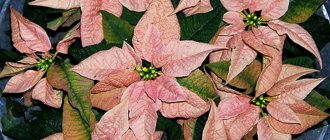This low-growing thorny shrub is found in almost every garden where berry crops are grown. In order to increase the planting area of gooseberries or acquire a good variety, it is not necessary to purchase a seedling in the store. With a healthy plant, getting a new bush is easy.
Generations of gardeners have developed many effective and simple methods for propagating gooseberries at home:
- seeds;
- dividing the bush;
- shoots;
- green and woody cuttings;
- horizontal and arcuate layers.
Each owner chooses the method that is suitable for himself based on the season, the age of the bush, suitable for division and his own skills.
The most reliable technologies are those that do not require separation of planting material from the bush before root formation. Because, in this way, the future seedling, in addition to its own strength, receives nutrition from the mother plant.
Horizontal layering
This method of propagating gooseberries is perhaps one of the most reliable and effective. It is preferable to practice this method of gooseberry propagation in October.
In the spring you can also lay cuttings, but this must be done very early, even before the buds open and while there is still enough moisture in the ground (late March - mid-April).
We choose a healthy gooseberry bush, approximately 5-6 years old, take several well-developed branches aged from 1 to 3 years, which are lowest to the ground.
On the branches, first of all, we cut off annual growths by 1/3 of their length. This operation will promote better germination of lateral buds and the formation of strong shoots with well-developed roots.
Then, after pruning, we bend the branches to the ground and lay them in the grooves that we prepared in advance, and pin them tightly with metal or wooden hooks.
We fill the furrows with branches laid in them with fertile soil, water and mulch.
Next, don’t forget to periodically weed, water and feed. And soon the axillary buds on the branched branches begin to grow and vertically growing shoots form.
After the young shoots reach a length of 8-10 cm, they need to be hilled, and after two weeks the hilling is repeated.
At the end of September, we separate a branch with well-rooted shoots from the mother plant with pruning shears, dig it up and cut it based on the number of rooted shoots.
Then we sort them, shorten the roots, and cut the shoots to ¼ length. I recommend not to plant these shoots immediately in a permanent place, but to plant them for growing and in a year we will get excellent viable seedlings with 3-4 shoots and well-developed roots 30-50 cm long.
The main disadvantage of this method of reproduction is its high labor intensity. But at the same time, it is the most reliable when propagating European varieties.
Basic Rules
Gooseberries are an unpretentious plant; they grow easily. But some gardeners make mistakes. To avoid failure and get a strong plant that produces a good harvest, you need to know the rules for growing it.
- For propagation, gooseberries no older than 5-7 years are taken. It should produce good yields and be free from diseases and pests.
- Before receiving cuttings, it is recommended to completely prune the bush a year in advance. This will prepare him.
- When using purchased seedlings, it is advisable to choose them with a clod of soil. They don’t remove it, they plant it like this.
- You need to choose the right place. Heavy clay soil is not suitable for gooseberries, as it is not ventilated, which can cause root rot.
- If a greenhouse or greenhouse is used, the temperature should not be allowed to rise above 30˚.
- After planting, the plant requires abundant watering. Until it takes root, the soil must be constantly moistened.
- Young plants require more careful care. You need to regularly loosen the soil and remove weeds.
Arc-shaped layering
In some varieties of gooseberries, thin arched shoots, touching the ground, quickly take root. In this case, rooting can take place without our help, but if we help the plant a little, this process will go faster.
Where the branch touches the ground, dig a hole, place the branch in it, pin it and cover it with humus soil, forming a small mound.
In the fall, we separate the rooted cuttings from the mother bush and dig it up. We carefully inspect the resulting seedlings and, depending on their condition, send them either for growing or immediately plant them in a permanent place.
This method is very simple and effective. Its only drawback is that only one seedling is produced per branch. But if you are not growing gooseberry seedlings for sale or are not planting large plantations of this plant, then this is quite enough to update your plantings.
Lignified cuttings
Due to the fact that gooseberry cuttings take root rather poorly, many advise against cuttings, but I believe that this advice should be heeded by those involved in the industrial cultivation of seedlings.
And we, summer residents, can experiment and even if out of 10 cuttings we produce 2 or 3 roots, then this will be enough for us.
We prepare cuttings in early spring even before the buds wake up and begin to grow. And in the fall we cut the cuttings just before planting.
If we cut cuttings from the top of the shoots, they will take root and develop much better compared to those cuttings that are cut from the bottom of the shoots.
We plant cuttings cut in spring into open ground only after the soil has thawed to a sufficient depth. Before planting, cuttings can be stored at home in the refrigerator, after wrapping them in a damp cloth and placing them in a plastic bag.
Cuttings (20 cm long) cut in autumn are planted in a previously prepared bed with fertile soil. The distance between planted cuttings should be at least 15-20 cm.
It is best to plant cuttings at an angle of 45°, since with such planting we create more favorable conditions for the development of the cutting. After all, it is known that the higher the place where roots form in the cutting is located, the warmer the soil and the faster the rooting process will proceed.
After planting, thoroughly compact the soil around the cuttings, then water the plantings, only very carefully so as not to wash away the soil, and mulch with humus or peat in a layer of about 5-6 cm.
In the spring, when the snow melts, we will definitely check our seedlings. We carefully loosen the ground around them, level them, and if the cuttings are squeezed out of the ground, then we bury them back into the ground and press them lightly.
Later during the summer we carry out watering, loosening, weeding, and fertilizing.
Reproduction methods and step-by-step instructions with photos
There is nothing complicated about any of the gooseberry propagation methods, even for a novice gardener. However, each of them has its own nuances that you need to familiarize yourself with in advance.
Cuttings
Gooseberry cuttings can be green or woody. The former, as practice shows, take root faster, especially when it comes to varieties that are characterized by “capriciousness” atypical for the culture (Polonaise, Consul, Cooperator). But seedlings obtained from lignified cuttings can be transplanted to a permanent place in the fall, and those from green ones may have to be “grown” next summer.
The time for harvesting gooseberry cuttings depends on their type - green or woody
The best time to harvest planting material is early morning or late evening in June or early July. The optimal length of a green cutting is 8–14 cm; the presence of 6–8 growth buds is required. The tip of a shoot or a completely cut annual branch takes root best. The “donor” bush should be no older than 4–5 years. The lower cut is made at a slight angle, the upper one is straight, 7–10 mm above the last bud.
Green gooseberry cuttings are cut early in the morning or after sunset - at this time the maximum concentration of nutrients and moisture is observed in the tissues
Green cuttings are rooted as follows:
- All leaf plates are cut from the cuttings, with the exception of the top two or three, without touching the petioles. Using a razor blade or scalpel, longitudinal cuts are made on the existing buds, and another 2-3 of the same are made at the base of the cutting.
- The lower part of the cut shoots is immersed for 8–10 hours in a root formation stimulator solution prepared according to the instructions (Heteroauxin, Kornevin, Zircon).
- Small containers are filled with a mixture of peat chips and coarse river sand (in approximately equal proportions), and the substrate is well moistened. If there is free space in the greenhouse or greenhouse, you can dig a shallow trench, filling it with the same soil. In this case, leave 5 cm between cuttings and 7–8 cm between rows.
- The cuttings are planted, buried 2–2.5 cm at an angle of approximately 45º to the soil surface. Those in containers are covered with plastic bags to ensure high humidity (85–90%). The air temperature is maintained at 25–27ºС, the substrate temperature at 20–22ºС. The soil is periodically sprayed with a spray bottle; it should be moderately moist at all times.
A prerequisite for rooting green gooseberry cuttings is high air humidity and frequent watering.
- The cuttings are protected from direct sunlight with branches or white covering material stretched over them. You can also spray the glass of the greenhouse in this place with a solution of slaked lime in water.
If there is no space in the greenhouse, an appropriate microclimate for green gooseberry cuttings can be created at homeRecent Entries
Lilac perennials that are beautiful, compact and do not crowd out other plants Why when buying seedlings you should not take the sellers’ word for it and how to determine the age of the plant using 3 signs Tomato seedlings have turned purple or whitish: why the color has changed and how to save the plants
- Under optimal conditions, cuttings should produce roots in 10–12 days. After this, they need to be fed by spraying with a solution of complex fertilizer containing nitrogen (Nitrophoska, Diammofoska, Azofoska) - 15–20 g per 10 liters of water. Feeding continues throughout the season; in the fall, the seedlings are transferred to a permanent place. If the roots seem underdeveloped, you can postpone this procedure until next spring.
Most of the planted green cuttings manage to get strong enough over the summer to survive planting in the ground.
Most domestically bred gooseberry varieties do not readily propagate from lignified cuttings. But this method is very suitable for foreign, primarily North American, hybrids.
Planting lignified gooseberry cuttings at an angle stimulates the development of the root system and new side shoots
Planting material is cut from the root shoots at the end of September or at the beginning of October, when the bush loses its leaves. The top of the branch takes root best. They don’t have to be long—15–17 cm is enough.
- During the winter, cut cuttings are buried in the snow or, if possible, stored on a glacier. If you have a cellar or basement, you can do it differently. After cutting, planting material is placed for 1.5–2 months in boxes with wet sand, completely buried. When a characteristic “influx” (called callus by botanists) appears at the cut site, they are put away for storage, covered with wet sawdust or shavings.
- The next year in May, they are planted at an angle in a trench filled with loose fertile soil so that one or two buds remain above the soil surface. The distance between adjacent cuttings is 10–12 cm.
- The soil is well moistened, when the water is absorbed - mulch with sawdust, peat chips, humus (a layer so thick that the cuttings are not visible) or cover the bed with black plastic film.
- When the cuttings take root, the cover is removed. Caring for them during the summer consists of watering, loosening the soil, and weeding the beds. Once every 15–20 days they are watered with an infusion of fresh cow manure or nettle greens and dandelions diluted with water in a ratio of 1:10. In the fall, the resulting seedlings are transferred to a permanent place.
You can judge whether woody gooseberry cuttings have taken root by the appearance of new leaves
In regions with a warm climate, cuttings can be immediately “planted” into the ground. They are tied in a bunch, turned upside down and buried about 40–50 cm into the dug hole. Due to this planting, the development of growth buds is inhibited, and new roots, on the contrary, are stimulated, because the soil above warms up faster. The hole with the cuttings is covered with peat or humus (a layer 10–15 cm thick) and covered with a thick film. In the spring they are planted in the garden in the same way as woody cuttings.
In addition to the “traditional” method of planting woody gooseberry cuttings (photo below), there is another option (photo above), but it is only suitable for regions with relatively warm winters
There are also so-called combined cuttings. This is a part of a branch cut at the place where the green shoot (at least 5 cm long) passes into the wood, with the obligatory preservation of a piece of woody shoot, usually called the “heel”. This planting material is suitable for propagating most varieties of gooseberries; these cuttings do not need to be kept in a greenhouse. Its length, as well as the quality of the substrate and air humidity, are not particularly important. They grow roots quite quickly in ordinary water, and even faster in a weak (2-3 ml per liter of water) solution of a biostimulator.
Combined cuttings are suitable for propagating any varieties and hybrids of gooseberries, regardless of their origin
Video: propagation by cuttings
Reproduction by layering
Propagation of gooseberries by layering is the most popular method among amateur gardeners. In this case, the plant is not subjected to severe stress, as when cutting or dividing a bush. Already formed seedlings with their own developed root system are separated from the bush. Layers can be horizontal, vertical and arcuate.
In autumn, seedlings obtained from gooseberry cuttings are carefully removed from the ground and assessed to see if their root system is somewhat developed.
Propagation by horizontal layering is best suited for young bushes, aged 3–4 years. From each of them you can get 4–7 viable seedlings per season. The mother bush continues to bear fruit.
- Select 3–5 healthy annual shoots. In the spring, when the soil has warmed up sufficiently, dig trenches 5–7 cm deep, fill them with a mixture of humus and peat chips and lay branches in them so that along the entire length, including the base, they are in contact with the substrate. To do this, the shoots are fixed in several places with pieces of bent wire or ordinary pins. The tops are pinched, cutting off 3–4 cm.
- The shoots are not covered with soil from above; the substrate in the trench is constantly kept moist. They are covered with fertile soil only when vertical shoots 4–5 cm high appear.
- When the seedlings grow to 12–15 cm, they are hilled up, completely covered with earth. Further care consists of regular watering, applying fertilizers containing nitrogen, potassium, phosphorus and weeding. If they stretch too much, in mid-summer the top of the shoot is pinched into 1-2 leaves to stimulate branching. In extreme heat, it is advisable to protect young plants from direct sunlight by covering them with branches or covering them with hay or straw.
- At the beginning of autumn, the resulting seedlings are removed from the ground and the root system is examined. Those in which it is sufficiently developed can be immediately transferred to a permanent place. The rest are grown next summer, buried for the winter.
When propagated by horizontal layering, the bush from which planting material is obtained continues to bear fruit.
Reproduction by arcuate layering is carried out according to the same scheme. The only difference is that the branch is fixed to the ground at one point, approximately in the middle, and this place is immediately sprinkled with earth and watered well. The top and base of the shoot remain on the surface; the first is pinched at a distance of 10–15 cm from the place where the branch is fixed.
The methods of propagating gooseberries by arcuate and horizontal layering differ little from each other; the choice depends on how many and what kind of seedlings you want to get
In the fall, the arcuate layer is guaranteed to produce a viable seedling. The branch connecting it to the mother plant is cut off, the young bush is dug up and transferred to a permanent place. Compared to propagation by horizontal layering, fewer seedlings are obtained, but they are more viable, quickly adapt to new living conditions and begin to bear fruit. As a rule, the first harvest is harvested two years after transplantation.
Vertical layering is used to propagate old gooseberry bushes over 6–8 years old, whose productive period is already coming to an end. You can’t expect a harvest from them this year or next.
- In early spring, before the leaf buds “wake up,” all shoots older than 2–3 years are pruned to the growth point. The remaining ones are shortened by two thirds. This procedure stimulates the intensive formation of new branches.
- When the young shoots reach a length of 12–15 cm, the bush is hilled around the perimeter, covering the new shoots with soil about halfway. All voids between them must be filled.
- During the summer, as the earthen hill crumbles, it is renewed 3–4 more times, gradually increasing its height to 18–20 cm. Before each hilling, abundant watering is required. In the second ten days of July, the tops of annual shoots are pinched so that they branch more intensively.
- During the season, future cuttings are fed 2-3 times, watered with a solution of complex mineral fertilizer for berry bushes. Regular watering is also required.
- In the fall, the soil is raked away from the bush. Rooted cuttings are separated from the mother plant and transplanted to a permanent place.
Compared to other methods, propagating gooseberries by vertical layering is a rather labor-intensive method.
There is another method of propagation by layering, most suitable for those who grow gooseberry seedlings for sale. From one bush you can get up to 30 new plants.
- In the spring, all shoots of the bush that will be the “donor” are cut off, leaving “stumps” 10–12 cm high. Since this stimulates intensive branching, many annual shoots appear during the season. A few of the weakest ones can be cut off to the point of growth, the rest are left until next spring.
- In mid-April, all shoots, except three or four located closest to the center of the bush, are bent and laid out in pre-dug grooves 8–10 cm deep, filled with fertile soil or humus. The resulting “design” resembles the sun with rays, as children draw it.
- The bent branches are fixed in a horizontal position, sprinkled with soil, and as it dries, watered with warm water.
- By the beginning of summer, almost every growth bud on the buried shoots should produce an “offspring.” When they grow to 12–15 cm, they are half covered with light fertile soil to stimulate the development of the root system.
- In September, all shoots on which layering has formed are separated from the mother bush. All plants that have at least small roots are preserved.
- The cuttings are transplanted into pots of suitable size. They overwinter in the basement or cellar, at a slightly positive temperature and air humidity of 65–75%.
- In the spring they are transplanted into a greenhouse. The distance between the bushes is about 30 cm, between the rows - 0.5 m. The root collar must be buried 3-4 cm more than it was before. By autumn, the grown layerings are ready for planting in a permanent place.
The latter method allows you to get up to 30 new seedlings from one gooseberry bush
Video: growing new gooseberry bushes from cuttings
Dividing the bush
Dividing the bush is the most suitable method when you need to propagate a rare or scarce gooseberry variety. As a rule, in places where shoots grow, its bushes form additional roots. A year before the proposed procedure, all branches older than five years are cut to the point of growth.
It is not advisable to divide a gooseberry bush into too many parts; usually 3–4 new ones are obtained from one plant
- Gooseberry bushes are dug out of the ground and the roots are unraveled, separating the young shoots from the old “stumps”. The roots are cut with a sharp, disinfected knife, trying to reduce the number of damage to a minimum.
- To prevent the development of rot and other diseases, the sections made are dusted with crushed chalk, sifted wood ash, colloidal sulfur, and cinnamon. Each part must have a developed root system and at least three shoots.
- The roots are lubricated with a mixture of powdered clay and a solution of any biostimulant. The correct consistency resembles thick sour cream.
- The seedlings obtained in this way are planted in pre-prepared planting holes and watered abundantly (15–20 liters of water). The soil is mulched, existing shoots are shortened by a third of their length. If division is carried out in the fall, preparations for winter should be especially thorough.
Video on the topic
Other ways
In addition to those described, there are other methods of propagating gooseberries, but for one reason or another they are not very popular among amateur gardeners.
Growing from seeds
The method is mainly used by professional breeders when breeding new varieties, but no one forbids an amateur gardener to try this. The result is completely unpredictable - bushes obtained in this way rarely inherit the varietal characteristics of the “parent” plant.
Gooseberry seeds are propagated mainly by professional breeders; this is a rather complicated and time-consuming procedure.
- To obtain seeds, several large ripe berries are selected. The pulp is separated from the skin and dried for several days in direct sunlight.
- Planting material is placed in small flat containers filled with wet sand, buried 2–3 cm. For the winter, they are stored in a cellar or basement, or buried in an area to a depth of 40–50 cm, sprinkled with peat chips on top (layer 15–20 cm thick). cm).
- At the beginning of April, the seeds are sown in a greenhouse or greenhouse, covered with humus or peat. Layer thickness - 2–3 cm.
- Seedlings with two or three true leaves are transferred to outdoor beds. During the summer, the plantings are regularly watered, weeded, and the soil is very carefully loosened.
- At the beginning of autumn, the seedlings (they should reach a height of 15–20 cm) are transplanted to a permanent place in pre-prepared holes.
Reproduction by perennial branches
Planting material is obtained during anti-aging pruning, ridding the bush of all shoots older than 5–6 years.
There will definitely not be a shortage of planting material when propagating gooseberries with perennial branches - it is formed in abundance after the next pruning
- The cut branches are laid horizontally in shallow (5–6 cm) grooves, leaving the top (last season's growth) on the surface, and covered with light fertile soil.
- The top is pinched, removing the top 2-3 buds. The soil is constantly kept moist. During the season, the emerging shoots are watered 2-3 times with a solution of Nitrofoski or Azofoski (5-7 g/l) to stimulate the growth of green mass.
- In autumn, seedlings that have reached a height of 15–18 cm are transplanted to a permanent location. Less developed ones are grown next summer in a greenhouse or in a garden bed.
Green cuttings
The green cuttings method is a more effective way of propagating gooseberries than the previous one - using lignified cuttings. The best time for green cuttings of gooseberries is the second half of June. The rate of growth and development of shoots in plants largely depends on the weather, so the optimal timing of cuttings varies from year to year.
For cutting cuttings, it is best to use young growths of the current year, which are recommended to be harvested early in the morning or in the afternoon, or in cloudy weather.
The length of the cuttings should be approximately 7-12 cm, and they should be cut with a sharp knife or sharp razor. It is advisable to treat the cut cuttings with some kind of growth regulator for better rooting. To do this, dip the cuttings into the working solution and keep them for 12-24 hours at a temperature of 20-24°C.
Then we wash the sections treated in this way with running water and plant the cuttings in a specially prepared nursery according to the following scheme - 3x7 cm to a depth of 1.5-2 cm and carefully water them.
We prepare the soil in the nursery in advance: the top layer is from a mixture of peat or humus with sand or perlite (1:1); Below is a fertile layer, the thickness of which should be approximately 10 cm, made of rotted manure; the lowest layer is drainage, since gooseberries do not like waterlogging.
It is very important to create the most favorable conditions for seedlings to take root, namely: warmth and high levels of air humidity. Thus, the most optimal air temperature is considered to be 18-23°C, and the night temperature should not fall below 16-21°C. It is recommended to water the seedlings only with warm water.
At the same time, overheating should not be allowed, so on very warm sunny days the nursery should be opened slightly, and the top should also be shaded with some kind of fabric or covering material.
After the roots have formed, it is necessary to regularly weed the plantings and loosen the soil. You can feed our seedlings several times over the summer with a solution of slurry diluted 6 times (½ bucket per 1 m2) or urea (20-30 g per 1 m2).
If at the very beginning of root formation it is necessary to maintain a high level of humidity (there should be moisture on the leaves), then after mass rooting we reduce the humidity level to 70-85%, and then bring it to humidity in open ground.
Seeds
You can grow gooseberries using seeds. This method is popular as propagation by offshoots or cuttings, but is more suitable for breeding new species.
Features of propagation by seeds
In order to get the seeds, you need to collect the berries, wash and dry them for several days. After this, you need to immediately plant them in pots with prepared soil. You need to mix fertile soil, sand and humus, and add drainage to the bottom.
Plant the seeds to a depth of 0.5 cm, at a distance of 5 cm from each other. Then, the seeds are watered and covered with film. Pots of gooseberry seeds should be stored in a cool place. In spring, the pots are placed in the ground, and after the leaves appear, the gooseberries are planted from the containers.
Errors
The main mistakes when growing gooseberries from seeds are:
- early or late planting of plants in open ground;
- the seed takes a long time to dry;
- not enough feeding for the young plant;
- abundant watering.
Important! Gooseberries need to be planted in a checkerboard pattern so that the bushes do not shade each other.
Combined cuttings
A combined cutting is a green shoot with part of last year's lignified growth, the length of which should not exceed 3-4 cm. We prepare cuttings with a heel, a crutch, and a stand.
We get a cutting with a heel when we simply break out a branch; cutting with a stalk - this is when we cut off a green branch with part of the woody shoot and the cut goes along last year’s brown growth; We prepare a cutting with a stand from a side branch and it turns out that part of the woody shoot (crutch) extends perpendicularly from the green branch.
You can start propagating gooseberries in this way from the end of May, as soon as the green growths reach a height of 5-7 cm, and then for almost the entire active growing season.
We plant the prepared cuttings in loose, well-moistened soil, deepening the “heel” and base by 3-4 cm. Then we water and mulch the soil abundantly. Roots most often form within one and a half to two weeks.
Caring for young plants
In order for young gooseberries to grow well and produce a lot of harvest, they must be fed with potassium fertilizers or humus. It is also recommended to regularly treat it against pests and diseases. To prevent the branches of a young plant from breaking, it is recommended to make supports for it.
Every spring, gooseberries are sprayed with hot water from a spray bottle and the soil is mulched so that the roots receive enough oxygen. There are no great difficulties in propagating gooseberries. The main thing is to follow all the instructions and create comfortable conditions for young bushes to develop.
Perennial branches
Old gooseberry branches cut out in spring or autumn can not be thrown away, but used for propagation.
To do this, we dig a hole in the ground, place a branch there and cover it with fertile soil. On the surface we leave only the very top of the branch and this year’s green growth. To stimulate the awakening of lateral buds, green growths can be pinched.
In the future, the soil must be constantly kept moist. We begin to feed the shoots when they begin to grow. Then in the fall we dig up the branch, divide it into separate seedlings, depending on how many shoots have taken root, and plant them in a separate bed for growing.
Peculiarities of propagation of gooseberries without thorns
The thorns on the surface of the branches cause inconvenience for gardeners when caring for berries. Breeders have developed thornless varieties. They are grown on fertile, well-fed lands.
They reproduce similarly to ordinary species: by cuttings, using all types of layering. Good results are obtained when propagating gooseberries from green cuttings. The reproduction procedure follows the same pattern as for the prickly representative of the berry crop.
The absence of thorns simplifies pruning, weeding, and berry picking. With proper care and proper cultivation of the crop, you can get a good harvest of tasty and healthy berries.
Dividing the bush
This propagation method is usually used in cases where it is necessary to transplant a valuable variety from an old site to a new one.
A year before the planned transplant, it is necessary to cut out all the old branches at the root so that new shoots begin to grow.
Next year we dig up the bush, divide it into several parts and immediately plant them in pre-prepared planting holes. It is best to do such a transplant either in the fall or in the spring, but not in the summer.
Well, dear readers, we briefly examined all the methods of propagating gooseberries. I hope that in this article you will find useful information that will help you successfully propagate your favorite variety, and we’ll talk about gooseberry diseases and pests in the following articles.
In conclusion, I would like to invite you to take a little break from the propagation process and watch an interesting video on how to make gooseberry ice cream.
See you soon, dear readers!











